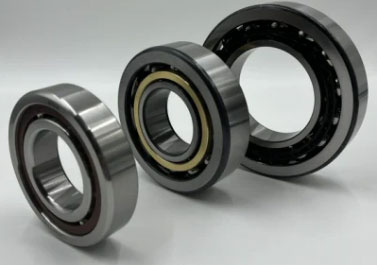Home / News / Understanding Ball Bearings: Types, Applications, and Advantages
Understanding Ball Bearings: Types, Applications, and Advantages
Ball bearings are an essential component of machinery and equipment in various industries, including automotive, aerospace, manufacturing, and more. These bearings provide high precision, low friction, and support heavy loads, making them a popular choice for many applications. In this article, we will discuss the types, applications, and advantages of ball bearings.
Types of Ball Bearings
Ball bearings come in various types, each with unique features and benefits. The most common types of ball bearings include:
Deep Groove Ball Bearings: These bearings are the most widely used type of ball bearings. They have a deep groove design that allows them to handle radial and axial loads.
Angular Contact Ball Bearings: These bearings are designed to handle both radial and axial loads, with a higher capacity for axial loads than radial loads. They are commonly used in pairs to support axial loads in both directions.
Self-Aligning Ball Bearings: These bearings are designed to correct misalignment issues in machinery and equipment. They have two rows of balls and a spherical outer ring that can compensate for angular misalignment.
Thrust Ball Bearings: These bearings are designed to handle axial loads in one direction and are commonly used in applications such as automotive transmissions, steering systems, and machine tool spindles.
Applications of Ball Bearings
Ball bearings are used in a wide range of applications, including:
Automotive Industry: Ball bearings are used in various automotive components such as engine, transmission, and steering systems.
Aerospace Industry: Ball bearings are used in aircraft engines, landing gear, and other critical aircraft components.
Manufacturing Industry: Ball bearings are used in various manufacturing processes, such as conveyor systems, printing presses, and textile machinery.
Medical Industry: Ball bearings are used in medical equipment such as dental drills, surgical tools, and hospital beds.

Advantages of Ball Bearings
Ball bearings offer several advantages, including:
High Precision: Ball bearings provide high precision and accuracy, making them ideal for applications that require precise positioning and movement.
Low Friction: Ball bearings have low friction, which reduces energy consumption and increases efficiency.
High Load Capacity: Ball bearings can support heavy loads, making them ideal for applications that require high load capacity.
Long Service Life: Ball bearings have a long service life, which reduces maintenance costs and downtime.
Ball bearings are an essential component in various industries, providing high precision, low friction, and high load capacity. With the different types of ball bearings available, they can be used in a wide range of applications, from automotive to medical equipment. The advantages of ball bearings, including high precision, low friction, high load capacity, and long service life, make them a popular choice for many industries.
- Previous: Understanding the Function and Applications of Slewing Bearings
- Next: Precision Angular Contact Ball Bearing: High Accuracy for Demanding Applications













